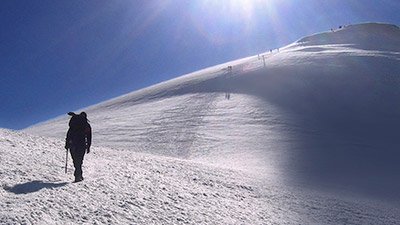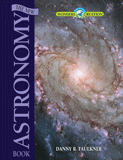
Don’t Miss the Perseid Meteor Shower—Wednesday, August 11
Shooting Stars Point to Biblical Accuracy
On the night of August 11, viewers around the world will be treated to the annual Perseid meteor shower.
On the night of August 11, viewers around the world will be treated to the annual Perseid meteor shower. If clear skies prevail, patient observers may witness hundreds of “shooting stars” in one night as tiny cosmic pebbles are vaporized in Earth’s upper atmosphere.
As the earth travels through space, it occasionally intercepts small interplanetary particles which enter Earth’s upper atmosphere at speeds of several hundred thousand kilometers per hour. These particles (called “meteoroids’) are heated and vaporized by atmospheric friction resulting in a bright streak called a meteor (or “shooting star”). On almost any clear night, a patient observer can see several meteors. But on a few nights of the year, meteors occur in great numbers—a meteor shower. The Perseid shower occurs every year on August 11–12 and is generally considered one of the best, most reliable meteor showers. It usually produces over 60 meteors per hour at its peak and favors observers in the northern hemisphere. Conditions will be favorable for the 2004 display; the moon will be a thin, waning crescent which produces very little light and will therefore not interfere.
The Source of Meteor Showers
Meteor showers are caused by comets.1 Comets contain ices and other materials that are blown away from the comet’s surface every time it passes near the sun (these are what form the “tail”). The debris disperses roughly along the orbit of the comet. A meteor shower occurs when Earth crosses this stream of debris. Since Earth orbits the sun in one year, it is in the same relative location and will cross the same meteoroid stream one year later; this is why many meteor showers (including the Perseids) are annual.
How to Watch
You don’t need a telescope or any special equipment to see a meteor shower, but you do need dark skies. The combined lights of a nearby city may produce a red haze called “light pollution” which will drown out all but the brightest meteors. Even a short drive into the country may dramatically increase the number of meteors you can see. An unobstructed view is very helpful. Try to get away from any nearby buildings and trees that can block sections of the sky. I recommend watching from a reclined position so that you are looking almost straight up and can see as much of the sky as possible. You don’t want to miss that “really good” meteor that happens in the part of the sky you can’t see. As with most meteor showers, the Perseids are better later in the evening—especially after midnight.
Shows the Reliability of the Bible
Whenever I watch a meteor shower, it reminds me that the solar system is thousands of years old as the Bible teaches—not billions of years. Meteor showers are the result of disintegrating comets; but this process can’t have been happening for millions of years or the comets would be long gone.2 This upcoming celestial fireworks display will again be a reminder of the complexity and grandeur of the universe and of its Creator.
“Robert Newton” is a creationist astrophysicist currently researching for his doctorate at an accredited university in the USA. He graduated summa cum laude with a double major in physics and astronomy and a minor in mathematics, and a M.S. in astrophysics. Robert is a member of Phi Beta Kappa. Editors Note: Dr. Jason Lisle originally published this article under the penname Robert Newton.
Footnotes
- The Perseid meteor shower is caused by the debris from comet Swift-Tuttle.
- See Faulkner, D., Comets and the Age of the Solar System and Sarfati, J., Comets—portents of doom or indicators of youth?
Recommended Resources

Answers in Genesis is an apologetics ministry, dedicated to helping Christians defend their faith and proclaim the good news of Jesus Christ.
- Customer Service 800.778.3390
- Available Monday–Friday | 9 AM–5 PM ET
- © 2025 Answers in Genesis




